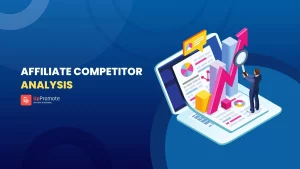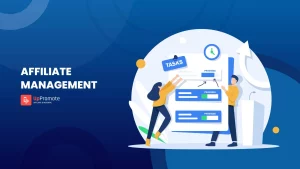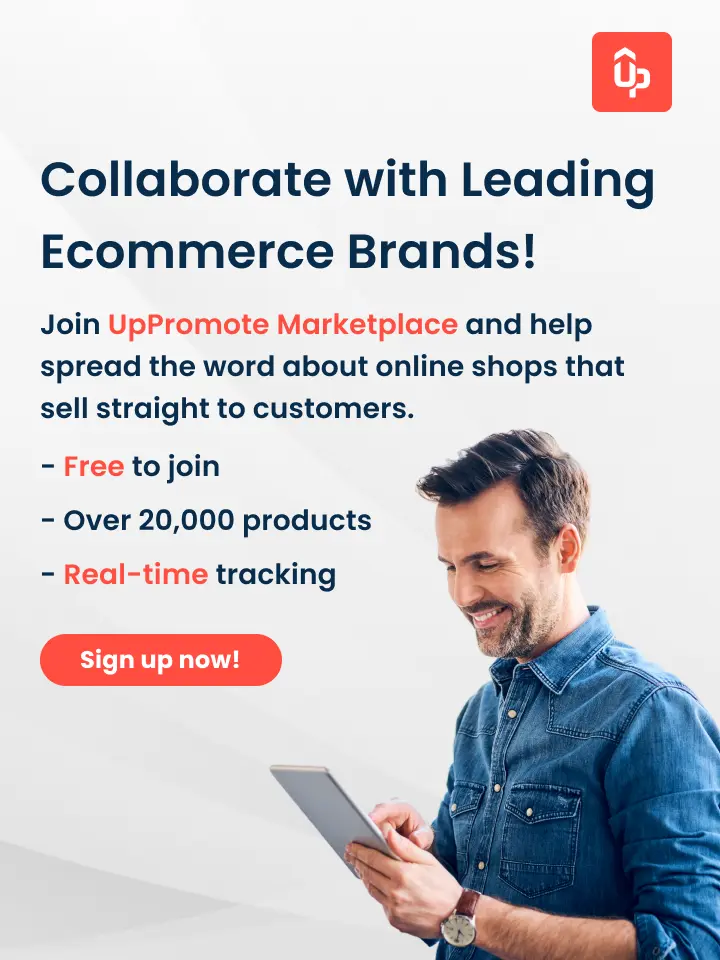Affiliate Email Marketing Campaigns are one of the vital roles of reaching out to customers in affiliate marketing. In this article, we’d like to discuss all aspects of affiliate email marketing campaigns for beginners. We also provide to all our readers some tips to run them successfully.
Let’s start to find out!
1. What are Affiliate Email Marketing Campaigns?

Affiliate email marketing campaigns allow you to communicate with customers directly through their inboxes. By subscribing to your email list, they have allowed you rights to promote to them. Even though your target audience has requested your material, this validation separates email from other marketing tactics.
Since you might send to hundreds or thousands of customers at once, your emails should be worded in a personal, one-to-one manner. Campaigns can be created to target clients based on where they are in the buyer’s journey.
As you develop connections with your customers (via email content), you will include affiliate links and propose alternatives to their problems.
We’ll go into how this process works, but first, here are just a few of the many advantages when you run an affiliate email marketing campaign successfully:
- Email marketing continues to generate one of the highest returns on investment (ROI), earning $42 in income for every $1 spent.
- Marketers who segment their campaigns and target their clients with suitable content can improve revenue by 760%.
- Affiliate email marketing campaigns allow you to create trust with your consumers, and they’ve already expressed some level of interest by subscribing to your content.
Now, let’s dive into some common mistakes when beginners run affiliate email marketing campaigns.
2. Common Mistake in Affiliate Email Marketing Campaigns

One of the most important sectors to confirm successful affiliate email campaigns is that the open rate must be high. Many beginners have made several common mistakes that affect that rate without knowing. Thereby, let’s have a look at those mistakes to make sure you can avoid them all.
- Our email recipients use Gmail primarily. Since Gmail has a spam filter, the filter categorizes emails according to different folder levels. Most will go to the recipient’s Ads folder. This means they don’t get a notification when your email arrives. Thus, the open rate will decrease.
- The email subject line doesn’t entice the recipient to open it. Many people abuse headers to trap users to open emails, which is also a trigger for spam filters.
- You sent the email at the wrong time. For example: Sending to business owners is best before 7:30 am or after 9 pm on weekdays (except Monday). Or different professions will also have other times. In general, measure continuously until you find the sweet spot about your open email rates.
- Email recipients don’t know who you are. (They are on the list you can scan or buy from someone.) Because they’re on this type of list, they get lots of other marketing emails from different people checking, buying just like you.
- The email list is outdated and has many email addresses that no longer exist. This leads to sent emails falling into “Bounce – Bounced” status. Depending on the software, the platform allows you to know and control the Bounce Rate, which emails are still available or not.
- You send emails directly using software installed on your computer instead of trusted email marketing platform providers like Mailchimp, ConvertKit…If you send a large number of identical emails from an IP address of your own, you may be blocked. Once blocked, any email you send will be sent to spam. Whether it’s a work email a 1-1 email. Trick Notes, you can check if your IP is blocked by looking at this page: https://check.spamhaus.org/
- The email body contains specific keywords, which activate the email filter, which is misidentified as spam. Sadly, Internet Marketing, Online Marketing, Online Marketing, Email Marketing… are all keywords that trigger spam email filters.
- The email contains too many links or images. These are also common spam filter triggers.
- The email contains attachments. Attachments are always suspected of being malware, so they are often blocked.
- You build your email list by giving people something for free in exchange for their emails. The truth is that people rarely use their primary email to receive gifts.
3. Components Affect Your Email Deliverability

Your email can deliver well, but deliverability is poor because it has fallen into the spam folder, another folder, or was corrupted by your Internet service provider. —ISP) block but not the recipient’s inbox.
The first step in helping ensure email deliverability is to improve reputation, and it builds over time to become strong. The next step is using the SPF record checker and taking other email security steps to increase email deliverability.
We want to mention some factors that affect deliverability in your affiliate marketing campaigns.
3.1 Relevant & Properly Formatted Email
Sending quality emails that include interesting and relevant content that your subscribers want to receive is the basis of excellent sending authority.
Note:
- You need to avoid spam trigger words like free, discount, etc., in the subject line and email body to prevent emails from going to spam or falling into other folders (like ads).
- Do not use false or misleading title information.
- Don’t use deceptive subject lines. The subject line should accurately reflect the content of the message.
- Also, make sure your code is optimized and formatted correctly. Poorly written HTML means that spam filters can interpret your message as something not and send you to the spam folder to be safe.
3.2 Consistent Volume
If your sending volume is inconsistent or erratic, you may experience delivery issues.
A sudden increase in outgoing email volume coming from your domain can make you look like a spammer, and ISPs (like Gmail) will treat your email that way.
Best practices for volume consistency:
- Instead of sending irregularly, you should keep sending the same volume of emails every week or every month.
- When sending from a new IP, you should start sending with low volume and then add gradually over a few weeks.
3.3 Low Bounce Rates
A good reputation also means that ISPs bounce only a tiny percentage of your emails. Try to keep your total bounce rate below 2% because if it’s much higher than that, you’ll start to notice some deliverability issues.
Bounced emails are generally of two types:
- Hard bounce: An email that cannot be delivered for some reason permanently. Maybe the email is a fake address, perhaps the email domain isn’t the real one, or perhaps the email recipient’s server won’t accept the email.
- Soft bounce: An email that cannot be delivered for temporary reasons such as the recipient’s inactivity, the recipient’s mailbox being temporarily full, or the outgoing email file may be too large.
4. How to Run Affiliate Email Marketing Campaigns Successfully?

Now that you’ve learned about the advantages of affiliate email marketing campaigns let’s run through the process of generating your campaign, from signup to send.
Step 1: Collect Data Customers
This phase can be difficult. It does, however, help if you are currently producing valuable material. Create a special offer or incentive for subscribing and place it on your website, along withmak a landing page or subscriber form.
Your offer should be consistent with your content strategy and brand, such as a downloadable PDF containing pertinent material or a free video or email course.
Furthermore, no matter how applicable your content is, it is preferable not to send unwanted emails. Always obtain permission and keep in mind that you are an invited visitor, not an intruder.
You don’t want to let your list go cold once you’ve started gaining subscribers. Sending affiliate email marketing campaigns is an efficient approach to developing subscriber relationships.
Step 2: Create Your Affiliate Email Marketing Campaigns
Set up a list of emails sent when subscribers do particular activities, including registering up for your newsletter, to streamline your campaign. You can also send emails manually if you like.
When developing email content, please consider that it’s ideal to assume the role of a helpful friend rather than a salesperson. Write and design your content to guide your email readers through purchasing.
Depending on where your consumer is in the purchase process, you may need to modify this sequence. For example, recently bought subscribers may benefit from a comprehensive welcome series that focuses on trust-building.
Marketing tools like segmentation and personalization may be included in your email service package to help you better target your consumers with material relevant to their travels. If those are available, take advantage of them!
Step 3: Set Up A/B Testing and Track Metrics
Adopting a “capacity building” approach can assist in the effectiveness of your affiliate email marketing campaigns. A/B or split testing is a great approach to optimize important metrics and increase conversions.
Subject lines, content type, length send time, and timeline sequencing is critical factors to assess. It is advisable to test one ingredient at a time simply.
The following are some critical metrics to monitor:
- The open rate is the percentage of emails that are opened. This metric can be improved with a customized topic line.
- The number of emails sent with at least one click clicked on is the click-through rate (CTR). CTRs can be increased by naturally replicating links across the email and having a clear and convincing call to action (CTA).
- Unsubscribes are the number of persons who ask to be deleted from your mailing list. Offering the quality and substance you promised contributes to keeping this number low.
Consider sending an email or a strong opening series to dormant or low-engagement subscribers to remind them why they subscribed in the first place. Provide value if they stay, but give them the option to opt-out if they don’t want to stay subscribed.
Wrapping Up
Email marketing is one of the most effective methods for increasing sales, with an outstanding ROI of $42 for every dollar spent.
Subscribers will look forward to reading your emails to design campaigns that target clients where they are on their purchasing journeys and give relevant quality material.
This brings us to the end of our talk and recommendations about tips for beginners to run effective affiliate marketing email campaigns. Check out UpPromote Affiliate right now if you’re looking for a comprehensive and straightforward Affiliate app!
Furthermore, we have carefully examined the 2022 eCommerce calendar in general, as well as the March eCommerce holiday calendar in specific.
In 2022, I wish all merchants and affiliates success!









